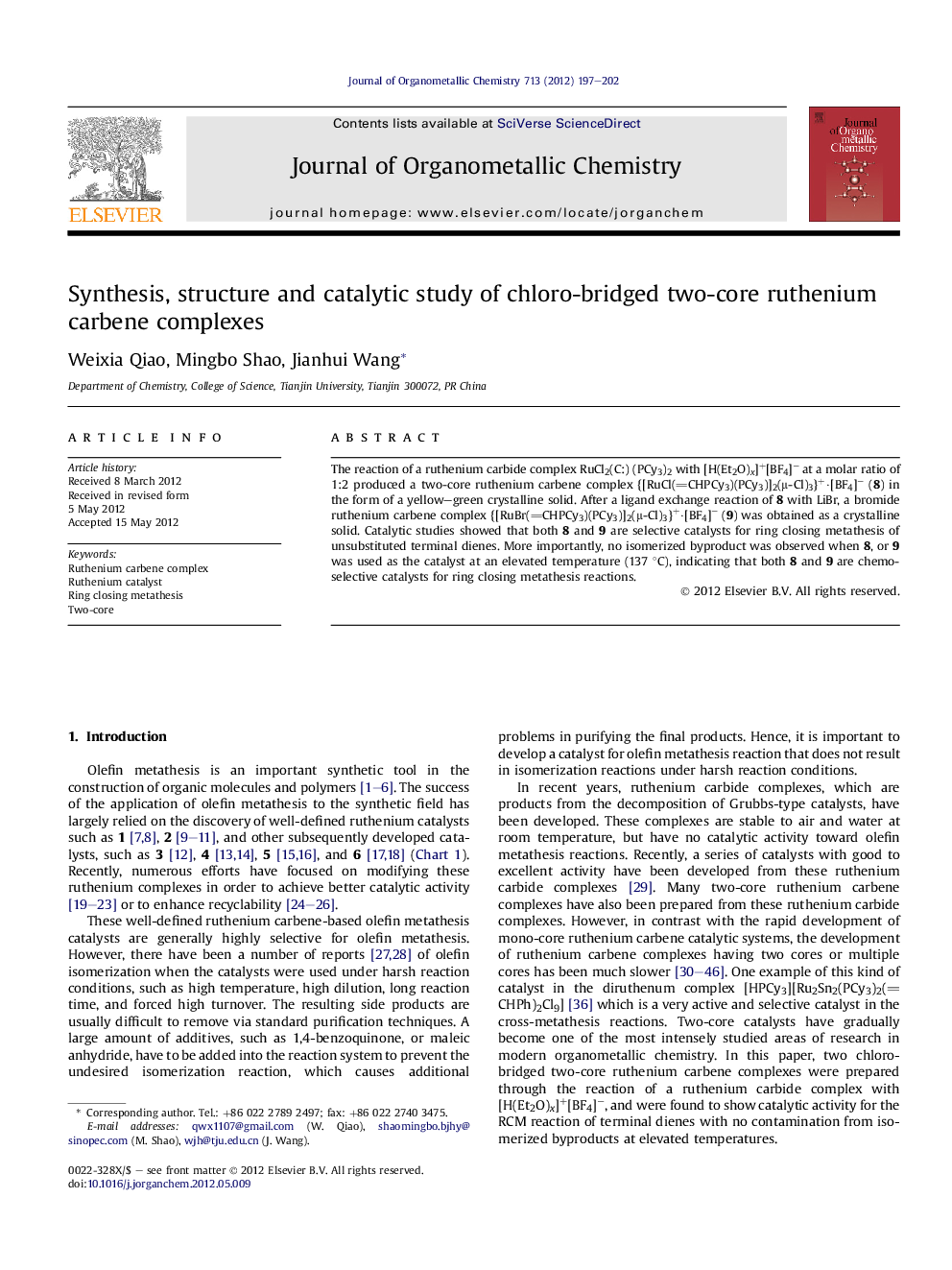| Article ID | Journal | Published Year | Pages | File Type |
|---|---|---|---|---|
| 1326011 | Journal of Organometallic Chemistry | 2012 | 6 Pages |
The reaction of a ruthenium carbide complex RuCl2(C:) (PCy3)2 with [H(Et2O)x]+[BF4]− at a molar ratio of 1:2 produced a two-core ruthenium carbene complex {[RuCl(CHPCy3)(PCy3)]2(μ-Cl)3}+·[BF4]− (8) in the form of a yellow–green crystalline solid. After a ligand exchange reaction of 8 with LiBr, a bromide ruthenium carbene complex {[RuBr(CHPCy3)(PCy3)]2(μ-Cl)3}+·[BF4]− (9) was obtained as a crystalline solid. Catalytic studies showed that both 8 and 9 are selective catalysts for ring closing metathesis of unsubstituted terminal dienes. More importantly, no isomerized byproduct was observed when 8, or 9 was used as the catalyst at an elevated temperature (137 °C), indicating that both 8 and 9 are chemo-selective catalysts for ring closing metathesis reactions.
Graphical abstractTwo-core ruthenium carbene complexes {[RuCl(CHPCy3)(PCy3)]2(μ-Cl)3}+·[BF4]− (8) and {[RuBr(CHPCy3)(PCy3)]2(μ-Cl)3}+·[BF4]− (9) were prepared. Catalytic studies showed that both 8 and 9 are moderately active catalysts for RCM reactions of unsubstituted terminal dienes and are highly chemo-selective catalysts for RCM reactions.Figure optionsDownload full-size imageDownload as PowerPoint slideHighlights► Two-core ruthenium carbene complexes 8 and 9 were prepared. ► Catalytic activity and chemo-selectivity were studied. ► Both 8 and 9 are active catalysts for RCM reactions of unsubstituted terminal dienes. ► Both 8 and 9 show high selectivity for RCM reactions. ► There was no isomerized byproduct at an elevated temperature (137 °C).
